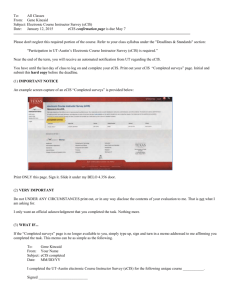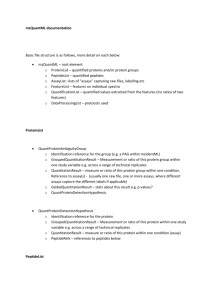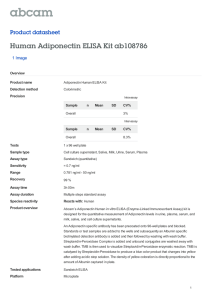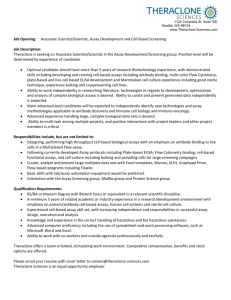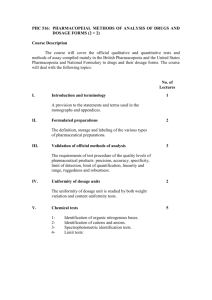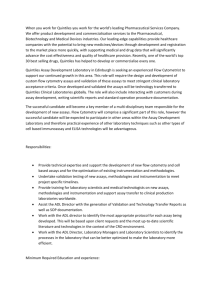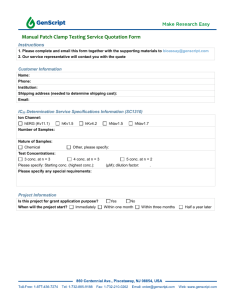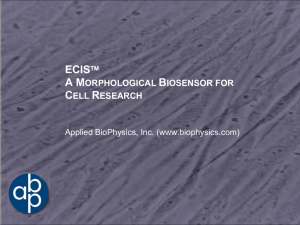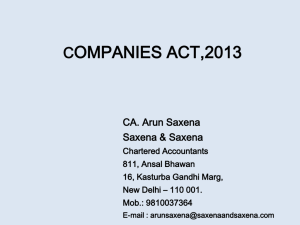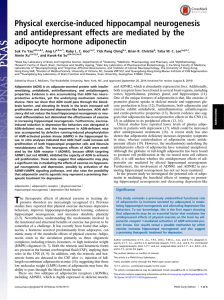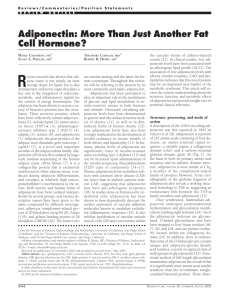Supplementary Material and Methods
advertisement
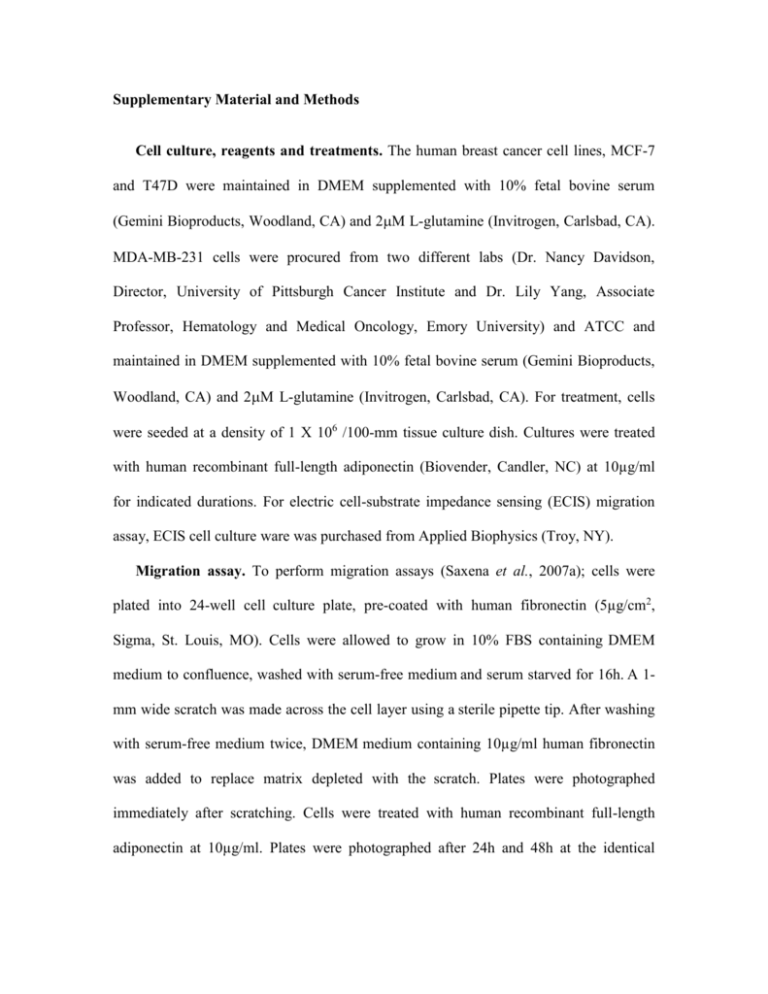
Supplementary Material and Methods Cell culture, reagents and treatments. The human breast cancer cell lines, MCF-7 and T47D were maintained in DMEM supplemented with 10% fetal bovine serum (Gemini Bioproducts, Woodland, CA) and 2M L-glutamine (Invitrogen, Carlsbad, CA). MDA-MB-231 cells were procured from two different labs (Dr. Nancy Davidson, Director, University of Pittsburgh Cancer Institute and Dr. Lily Yang, Associate Professor, Hematology and Medical Oncology, Emory University) and ATCC and maintained in DMEM supplemented with 10% fetal bovine serum (Gemini Bioproducts, Woodland, CA) and 2M L-glutamine (Invitrogen, Carlsbad, CA). For treatment, cells were seeded at a density of 1 X 106 /100-mm tissue culture dish. Cultures were treated with human recombinant full-length adiponectin (Biovender, Candler, NC) at 10µg/ml for indicated durations. For electric cell-substrate impedance sensing (ECIS) migration assay, ECIS cell culture ware was purchased from Applied Biophysics (Troy, NY). Migration assay. To perform migration assays (Saxena et al., 2007a); cells were plated into 24-well cell culture plate, pre-coated with human fibronectin (5µg/cm2, Sigma, St. Louis, MO). Cells were allowed to grow in 10% FBS containing DMEM medium to confluence, washed with serum-free medium and serum starved for 16h. A 1mm wide scratch was made across the cell layer using a sterile pipette tip. After washing with serum-free medium twice, DMEM medium containing 10µg/ml human fibronectin was added to replace matrix depleted with the scratch. Plates were photographed immediately after scratching. Cells were treated with human recombinant full-length adiponectin at 10µg/ml. Plates were photographed after 24h and 48h at the identical location of initial image. All experiments were performed at least three times in triplicates. Electric cell-substrate impedance sensing (ECIS) Wound-healing assays. Woundhealing assays were performed using the ECIS (Applied BioPhysics) (Saxena et al., 2008). For wound-healing assays, cells were grown to confluence on ECIS plates. The ECIS plates were submitted to an elevated voltage pulse of 40 kHz frequency, 3.5-V amplitude, and 30-s duration, which led to the death and detachment of cells present on the small active electrode resulting in a wound normally healed by cells surrounding the small active electrode that have not been submitted to the elevated voltage pulse. Cells were immediately treated with human recombinant full-length adiponectin at 10µg/ml. Wound healing was then assessed by continuous resistance measurements for 36 h. All experiments were performed at least three times in triplicates. Western blot analysis. Whole cell lysate was prepared by scraping cells in 250μl of ice cold modified RIPA buffer [50mM Tris-Cl (pH 7.4), 150mM NaCl, 1mM EDTA, 1% NP-40, 0.25% Na-deoxycholate, 1mM PMSF, 10μg/ml aprotinin, 10μg/ml leupeptin, 1mM Na3VO4 and 1mM NaF] (Saxena et al., 2007b). The lysate was rotated 3600 for 1h at 40C followed by centrifugation at 12,000g for 10min at 40C to clear the cellular debris. Total protein was quantified using the Bradford protein assay kit (Biorad, Hercules, CA). Equal amount of protein was resolved on SDS-polyacrylamide gel, transferred to nitrocellulose membrane, and western blot analysis was performed using the previously described antibodies. Immuno-detection was performed by blocking the membranes for 1h in TBS buffer [20mM Tris-Cl (pH 7.5), 137mM NaCl, 0.05% Tween-20] containing 5% powdered nonfat milk followed by addition of the primary antibody (as indicated) in TBS for 2h at room temperature. Specifically bound primary antibodies were detected with peroxidase-coupled secondary antibodies and developed by enhanced chemiluminescence (ECL system, Amersham Pharmacia Biotech Inc., Arlington Heights, IL) according to manufacturer’s instructions. All experiments were performed at least three-five times using independent biological replicates. Immunofluorescence and confocal imaging. MCF7, T47D, MCF7-pLKO.1 and MCF7-LKB1shRNA breast cancer cells (5x105 cells/well) were plated in 4-well chamber slides (Nunc, Rochester, NY) followed by treatment with 10µg/ml human recombinant full-length adiponectin for 2h. Cells were washed three times with 1X PBS and fixed using freshly prepared fixative containing 3.7% formaldehyde, 0.05% glutaraldehyde, and 0.4% Triton-X-100 in PHEMO buffer [0.068mol/L PIPES, 0.025mol/L HEPES, 0.015mol/L EGTA, 0.003mol/L MgCl2 and 10%v/v DMSO] for 10 minutes at room temperature. Primary antibodies (as indicated) were used at 1:500 with an overnight incubation at 40C followed by an anti-rabbit IgG Alexa Flour 488 secondary antibody used at 1:500 for 1h at room temperature. The nucleus was stained with 4’,6-diamidino2-phenyl-indole (Sigma-Aldrich) using 300nmol/L at room temperature for 10 minutes before mounting in Gel Mount mounting medium (Biomeda). Fixed and immunofluorescently stained cells were imaged using a Zeiss LSM510 Meta (Zeiss) laser scanning confocal system sonfigured to a Zeiss Axioplan 2 upright microscope with a 63XO (NA 1.4) plan-apochromat objective. All experiments were performed multiple times using independent biological replicates. Tumor cell invasion assay For an in vitro model system for metastasis, we performed a Matrigel invasion assay by using a Matrigel invasion chamber from BD Biocoat Cellware (San Jose, CA) (Saxena et al., 2008). Cells were seeded at a density of 1 X 105 cells per insert and cultured overnight. Triplicate wells were used for each treatment. Cells were treated with 10µg/ml adiponectin for 24h. After 24 h incubation, cells remaining above the insert membrane were removed by gentle scraping with a sterile cotton swab. Cells that invaded through the matrigel to the bottom of the insert were fixed in methanol for 10 minutes. After washing in PBS, the cells were stained with hematoxylin-eosin. The insert was subsequently washed in PBS, briefly air-dried and mounted. The slides were coded to prevent counting bias, and the number of invaded cells on representative sections of each membrane was counted with light microscope. The number of invaded cells for each experimental sample represents the average of triplicate wells. All experiments were performed at least three times.
